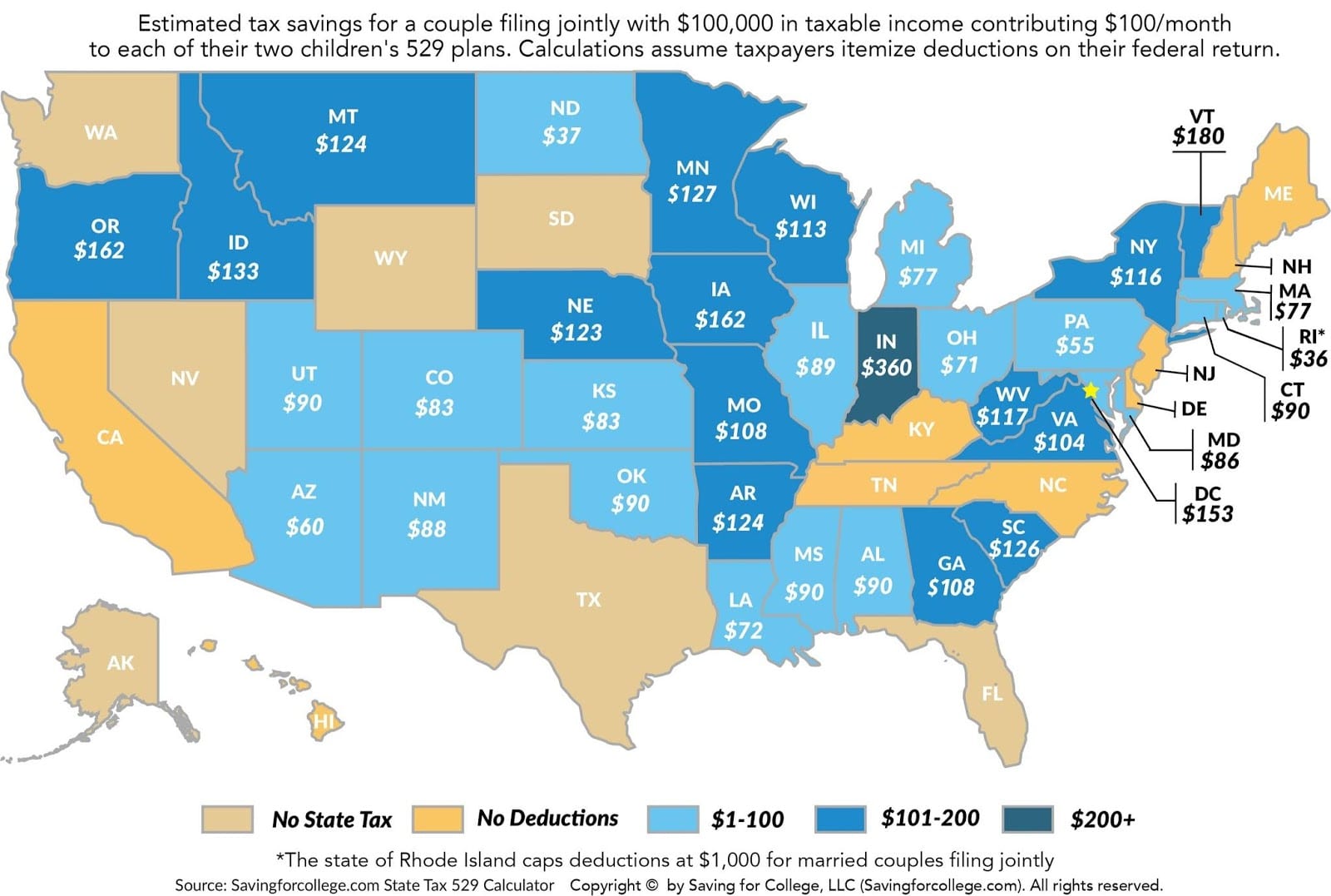Got kids? If you do, I bet you’ve spent time wondering how you’re going to pay for their college education. Tuition is obscenely expensive and has only been getting worse. So how do families prepare for this massive hit to their bank accounts?
What Is a 529 Plan?
 Clearly, families need to save for their kids’ higher education expenses, and a 529 savings plan is the smartest choice to do that.
Clearly, families need to save for their kids’ higher education expenses, and a 529 savings plan is the smartest choice to do that.
These plans work much like individual retirements accounts (IRAs), which use tax advantages as an incentive to get people to save and save more. And like a Roth IRA, you won’t be slapped with federal taxes on your investment earnings when you withdraw money from the plan.
But what makes 529 plans superior to IRAs? There is virtually no limit on contributions.
And some of those contributions will earn you an income tax deduction in most states.
Quick Note: Under the new tax law, you will be allowed to use your 529 plan to pay for your kid’s private-school tuition for elementary and high school.
How Do 529 Plans Work?
The plans are offered by the states, not Wall Street. Like a Roth IRA, you can invest your after-tax dollars in a 529 plan and watch your money grow until it’s time to withdraw it, tax-free.
You can spend the money on expenses like tuition, room and board, textbooks, and even computers. Plus, you can use the plans for undergraduate or graduate schools, technical or trade schools, and even some accredited schools overseas.
Not all 50 states run 529 savings plans, but some offer prepaid tuition programs as an alternative. In these programs, you lock in today’s rates.
Do All 529 Plans Offer Tax Breaks to State Residents?
Only 34 states, plus the District of Columbia, will give you a tax break on your state income taxes if you open an in-state or local plan. For example, New York’s 529 College Savings Program allows state residents to deduct up to $5,000 (single) or $10,000 (married filing jointly) on their taxes.
But keep in mind that it isn’t all about tax breaks. Size up every state plan. Each offers a unique mix of benefits, incentives, and fees. Plans are easy to open. You can do so directly online with the state government or through a middleman like a financial adviser. Check out the following graphic from SavingForCollege to see which category your state falls into.

Who Can Open a 529 Account?
Anybody can open one, really. Parents and grandparents typically hold the bulk of them, but other relatives and friends can participate. They just need to be U.S. citizens or resident aliens.
How Do You Open a 529 Account?
Many states don’t charge account-opening fees, but most require that you either pay a lump-sum opening minimum or else make systematic contributions. That said, the minimum contribution can be quite low — typically $25 or less.
After opening an account, the first thing to do is assign a beneficiary, which can be a child or an adult. You can even designate yourself! Next, you need to sort out how the money will be invested and used.
Is There a Cap on Annual and Lifetime Contributions?
Unlike IRAs, there are no annual contribution limits for 529 plans. But each state does impose lifetime caps ranging from $235,000 to $520,000. These caps reflect the expected cost of the average beneficiary’s higher-education expenses.
A 529 plan is designed exclusively to help a family amass college savings quickly.
You can front-load it with huge contributions. If you’re so fortunate, you can contribute (or “gift”) up to $15,000 without triggering federal gift taxes. In total, you can contribute up to $75,000 (single) or $150,000 (married) in just one year. The gift is treated as if it were made over a five-year period. Grandparents often employ this estate-tax planning strategy.
These days, you can even use apps to make it easier to save money for your kids’ futures. For example, U-Nest is a free, easy-to-use mobile app. It allows you to estimate your savings goals and set up a monthly savings plan from the comfort of your phone. You can save as little as $25 month, which grows tax-free over your child’s lifetime.
U-Nest also offers a family sharing feature that allows up to six family members to access the app and input extra savings. (Talk about a great holiday or birthday gift idea!) Plus, the app safely connects with your chosen bank account. And to top it all off, by joining today, you can get your first three months free. After that, it’s just a small fee of $3 a month.
Sounds Too Perfect. What’s the Catch?
To save for college quickly, you can’t beat a 529 plan. You get free money from the federal government, as well as (in many cases) your state.
That said, there’s one rub: Every 529 plan charges an annual fee based on the amount you have invested. For example, New York’s plan charges 0.15 percent. That’s $1.50 on every $1,000 invested. But other state plans charge way more and may impose additional fees.
One last thing: Should you ever decide to end the plan early and cash out, you’ll be hit with a 10 percent IRS penalty if you try to use the proceeds for unqualified expenses. That said, this penalty is only imposed on the earnings portion of your plan, and it doesn’t affect your initial contributions. Still, make sure to do your homework to find the best, lowest-cost plan that works for you and your family.
Additional reporting by Jazmin Rosa.





Pingback : Saving for College and Retirement: Setting Priorities | CentSai
Pingback : How to Pay for Private School on a Tight Budget | CentSai
Pingback : Investing for College: A How-To Guide for Parents and Students
Pingback : What Is an ABLE Account and How Does It Work? | CentSai
Pingback : Pay for My Child’s College? Not Gonna Happen | CentSai
Pingback : What to Do With Unused 529 or Other College Savings Plans